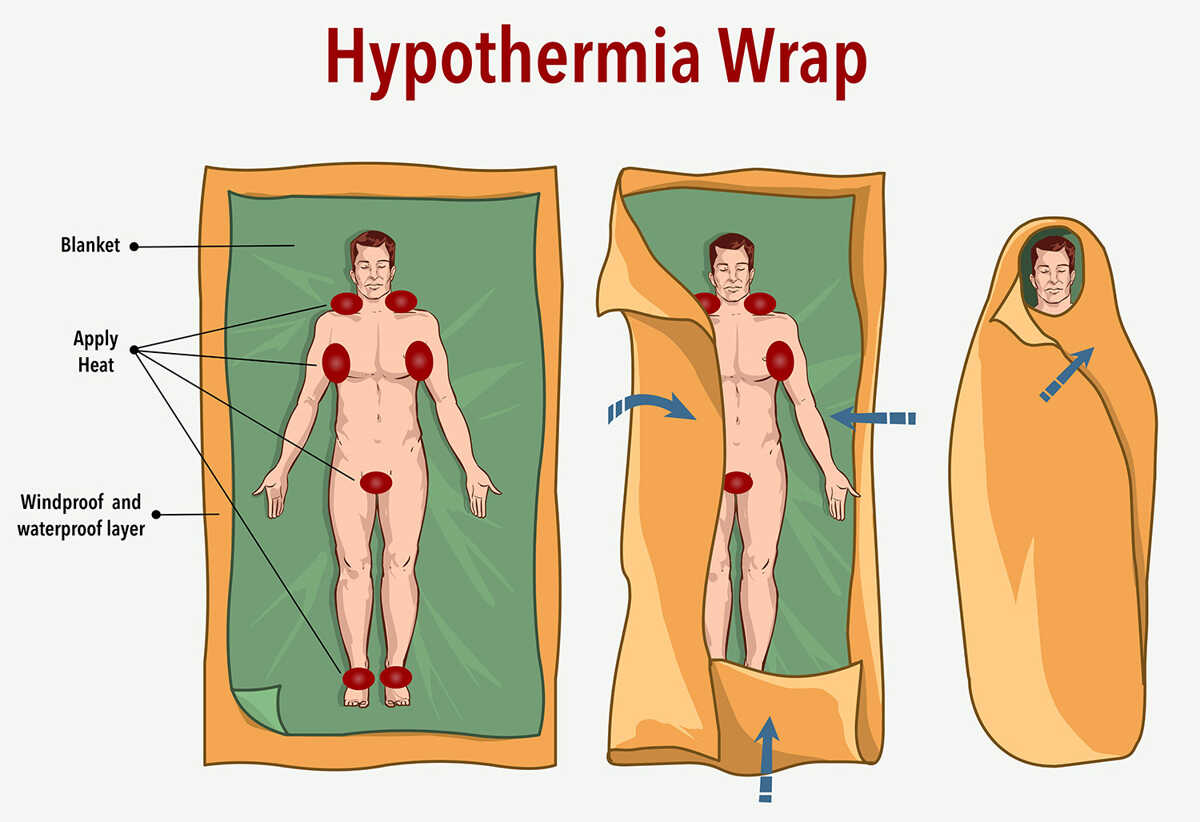For our bodies to work well, our internal organs need to stay at a fairly constant 37°C. If your internal organs start to get too cold, they are less able to keep all vital functions operating. The word hypothermia literally means under (hypo) temperature (therm). Hypothermia can set in quickly or over time and generally leads to the casualty becoming less co-ordinated and will lead to death if not managed well. It is always best to avoid hypothermia by dressing appropriately, keeping dry, staying warm, and eating well.
Mild Hypothermia starts when a persons body temperature drops below 35°C. Severe hypothermia occurs when a persons body temperature drops below about 30°C. At this point, they are likely to be unconscious and be experiencing life-threatening irregular heart rhythm.
Keep an eye out for any unusual “-umbings” (mumbling, Stumbling, grumbling) among each person in your party. Act quickly to prevent hypothermia from progressing into a more dangerous level.

Early warning signs (mild hypothermia)
A body temperature between around 35-32°C will yield signs and symptoms such as;
- feeling cold,
- uncontrollable shivering,
- clumsiness and slurred speech,
- apathy and irrational behaviour.
Severe Hypothermia
- shivering stops,
- may report feeling hot, and remove clothes,
- pulse difficult to find,
- level of consciousness declines further,
- heart rate may slow or irregular.
Management
Ensure that you, others in your group and your patient don’t continue to lose heat.
- If your patient is still shivering (and fully conscious) and there is shelter nearby, then protected them from the wind/rain and get to the shelter.
- If the patient is no longer shivering or is not fully conscious, then stop immediately. Build a shelter where you are by pitching your tent, portable bothy shelter or tarp.
Minimise movement of the patient and keep them laying down. Movement runs a serious risk of moving very cold blood from the extremities to the bodies core, causing further cooling and potentially cardiac arrest.
Carefully (and respectfully) remove wet clothing (to slow heat loss).
Stop all further heat loss and allow the patient calmly and slowly warm up to stabilise their core temperature.
- Prevent further heat loss by carefully placing a sleeping pad or other insulation under the patient to prevent further heat loss.
- Wrap the patient in a sleeping bag, space blanket or other blankets.
- Place hot (not able to burn) water bottles or other heat packs to the patient’s neck, armpits and groin. (eg fill water bottles or bladders).
- Have extra people in the tent to warm the air with their body heat, but not so many people that it risks moving the patient.
NEVER rub the patient or use fire, other radiant heat to warm the patient. This is more likely to move cold blood into the main part of the body potentially causing death.

If the patient is fully conscious give then warm sweet drinks, such as hot chocolate or soup with extra sugar added.
NEVER give patient alcohol to drink.
Call emergency services if you have any concerns for people’s welfare, such as if the patients;
- consciousness declines,
- stops shivering,
- pulse is difficult to find or is very irregular.